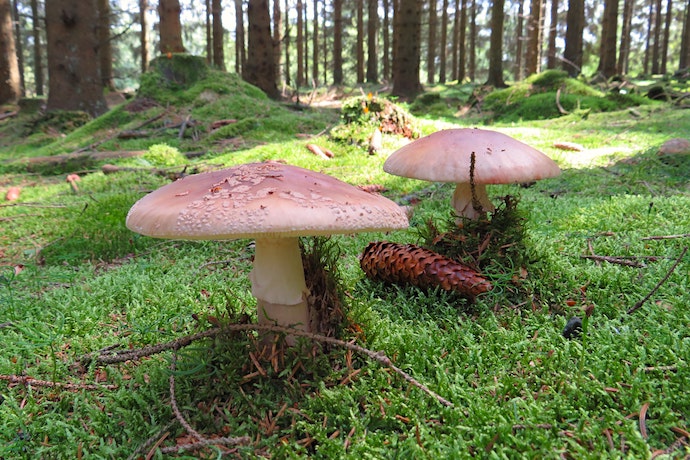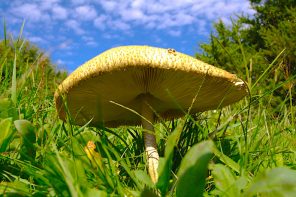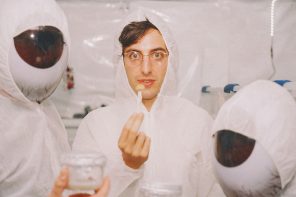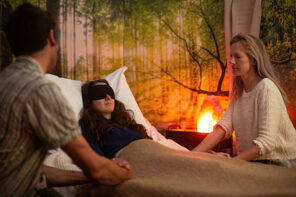The city of Hazel Park, Michigan made national headlines last week after its city council voted unanimously to decriminalize entheogens, or naturally occurring psychoactive drugs consumed for religious reasons. Substances like psilocybin mushrooms, ayahuasca, and ibogaine remain illegal at the state and federal levels, but cities like Hazel Park are invoking their religiosity as they decriminalize entheogens at the local level.
To understand the term entheogen and its relationship to the broader effort to decriminalize psychedelic drugs, consider that in 1978, Dr. Carl Ruck, Professor of Classical Studies at Boston University, sought to distinguish the religious from the recreational use of psychedelics. Psychedelic drugs became associated with what many perceived as the adolescent rebellion of the 1960s and early ‘70s counterculture. The federal government criminalized the use, possession, sale, and cultivation of these drugs, though many continued to use them both recreationally and sacramentally. To honor the latter, Ruck created the word entheogen by combining the Greek word “entheos,” often translated as “god within,” with “gen” from the word hallucinogen.
The term has grown in recent decades motivated by several factors. Chief among them is what activists and proponents often refer to as the Psychedelic Renaissance. As journalist and author Michael Pollan wrote in his 2018 New York Times bestselling book How to Change Your Mind: What the New Science of Psychedelics Teaches Us About Consciousness, Dying, Addiction, Depression, and Transcendence, a growing interest in psychedelics is sweeping the nation as researchers and therapists consider the medicinal and therapeutic benefits of these ancient plants. Based on their initial findings, venture capital and corporations are increasingly interested as well, resulting in millions of dollars of investments in psychedelic research.
Concurrently, Americans across the nation consumed psychedelic drugs for various reasons, including, but not limited to, the pursuit of religious, spiritual, or mystical experiences, as well as for their purported psychopharmacological benefits. Their effects were emboldened by a 2006 decision, in which the U.S. Supreme Court ruled unanimously that members of União do Vegetal (or Union of the Plants), a small religious group from South America, can legally consume a psychedelic tea called hoasca (or ayahuasca), an otherwise illegal psychoactive drug, during twice-monthly rituals.
Based largely on the Supreme Court’s decision, three years later a lower court ruled that members of a similar religion in Oregon have a religious right to consume what they call Daime, a variation of the base ingredients used to create ayahuasca. In these decisions, justices did not invoke the word entheogen, but reinforced the broader idea that under certain circumstances, Americans had a legal right to consume otherwise forbidden psychoactive drugs.
While the entheogenic use of psychoactive substances predates the Psychedelic Renaissance, the two have combined in the form of the Decriminalize Nature movement, which encourages local governments to essentially decriminalize the use of entheogens by making the enforcement of prohibition among the police’s lowest priorities.
This movement received its first victory in May 2019, when voters in Denver, Colorado narrowly approved Ordinance 301, a ballot initiative “designed to decriminalize the use and possession of mushrooms that contain psilocybin, a hallucinogenic compound.” For the first time since the federal war on drugs, a city effectively decriminalized the use of a psychedelic drug. Motivated by this victory, the movement to decriminalize psychedelics subsequently spread, as over a dozen cities and counties followed Denver’s lead.
Despite their similarities, subsequent decriminalization bills have notable differences. Chief among them is that almost all these initiatives explicitly invoke the category of entheogens, resulting in a broader range of decriminalized substances.
Hazel Park, for example, decriminalized all entheogenic plants, which the city defined as:
“the full spectrum of plants, fungi, and natural materials and/or their extracted compounds, limited to those containing the following types of compounds: indole amines, tryptamines, and phenethylamines; that can benefit psychological and physical wellness, support and enhance religious and spiritual practices, and can reestablish human’s inalienable and direct relationship to nature.”
This classification is significant as it simultaneously sacralizes and broadens the category of decriminalized substances.
Cities like Hazel Park are but one component of the larger Psychedelic Renaissance, where activists, clinicians, and practitioners are working tirelessly to legitimize the use of psychedelic drugs. The category of entheogen—which has connected it to our nation’s long standing commitment to religious freedom—is proving a powerful tool in implementing that movement at the local level.





